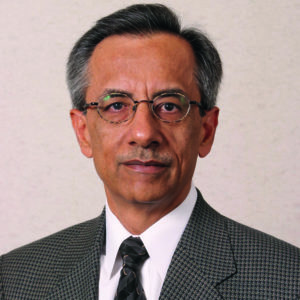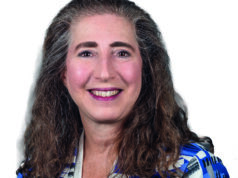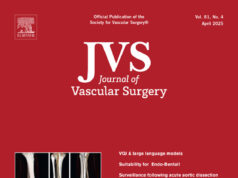
Ten years ago when we wrote a paper on diversity that was published in the Journal of Vascular Surgery (JVS), it barely caused a ripple. Entitled “Diversity in membership and leadership positions in a regional vascular society,” it was co-authored by Patrick S. Vaccaro, MD, and Michael R. Go, MD. We are, respectively, of South Asian, Caucasian and Southeast Asian/Pacific Islander backgrounds.
I am not sure whether my co-authors got any feedback, but I perceived negative vibes that may have hurt my academic aspirations. Our work was 10 years ahead of its time. Perhaps times were changing, but within three years our regional society had its first female president and one of North African descent.
Our work was provocative but may have been misunderstood. My frustration with how things were year after year led to an effort to look at the data to understand the homogeneity of our officers.
It did not petition for a quota system; neither did it suggest there had been a deliberate plan to keep others out. G. Patrick Clagett, MD, then SVS president, had asked Frederick Beavers, MD, and I to co-edit a JVS diversity supplement, and insisted that the work be included. I agreed with some trepidation and concern about how it would be interpreted.
In 2008, by our estimate our regional vascular society had 68% of members in private practice. Only 5.7% of members were female, 1% were African Americans and even fewer were Latinos.
After reviewing 30 years of member records by academic/private practice, gender, race and ethnicity, we concluded that private practitioners, women, and ethnic and racial minorities were underrepresented in senior leadership positions. These groups were appointed to junior councilor roles—like I was—but did not progress to senior leadership positions.
We were careful to note: “Our findings should not be taken to mean that the lack of diversity in membership or leadership positions necessarily implies a conscious or planned strategy to exclude diverse members. Rather than a ‘glass ceiling,’ which implies an active effort to exclude women and minorities, our findings are consistent with Blakemore’s postulate of ‘cumulative disadvantages.’”
Additionally, after a review of the diversity literature, we suggested: “Similar attraction and self-categorization theories suggest that people are more likely to associate themselves with people of similar demographic characteristics, including age, race and gender. Self-formed groups such as professional societies, particularly work groups, tend to organize themselves along homogenous lines. On the other hand, randomly formed groups generally exhibit more diversity.”
We determined that the literature was consistent that individuals preferred to interact with members “who are of their own kind.”
This supported our bias that groups “in the know” were much more likely to benefit from the organization. We suggested several actions by the society to advance diversity of all kinds, not just gender, race and ethnicity, but also of thought and practice type.
Finally, my fellow authors and I concluded our paper with a plea that “other than the issue of fairness, why should professional organizations such as the [Midwestern Vascular Surgical Society] alter course? A possible answer is self-preservation.” The world has since moved on to some degree. The biggest gains in healthcare occupations in the United States have occurred in areas other than among physicians. A lack of opportunity and mentorship are still significant obstacles in the way of giving qualified people a fair chance to progress.
When starting a Faculty Leadership Institute (FLI) at my institution, I was button-holed by many diversity advocates in an effort to make sure that the groups had adequate minority and female representation.
My answer was consistent with my political philosophy: equality for all. I insisted that our faculty would do fine without any of us putting our feet on the scales for anyone. We made sure our call for applications got wide publicity in person, in newsletters and in emails, especially for high-potential women and minorities.
I was right. Their representation was better than their respective share of the faculty in the medical center. But if it were not for personally reaching out to some faculty who were reluctant to apply, thinking they had no chance of getting in, our goal of the best possible cohort would not have been achieved.
A relatively newly-hired African American sub-specialty surgeon was appointed as an interim division director, and had been overwhelmed at even the mere thought of applying. It took some arm-twisting to get him to do so. The extra education for this high-potential faculty member became very useful in his role, and he is flourishing several years later. Several men and women also needed face-to-face conversations about the opportunities the FLI could provide them. All we needed to do was reach out to people and give everyone a fair chance.
In essence, that is all people are asking for.
Bhagwan Satiani, MD, is professor emeritus in the division of vascular diseases and surgery, the department of surgery, in the College of Medicine at The Ohio State University. He is an associate medical editor of Vascular Specialist.











